Red and yellow will kill a fellow
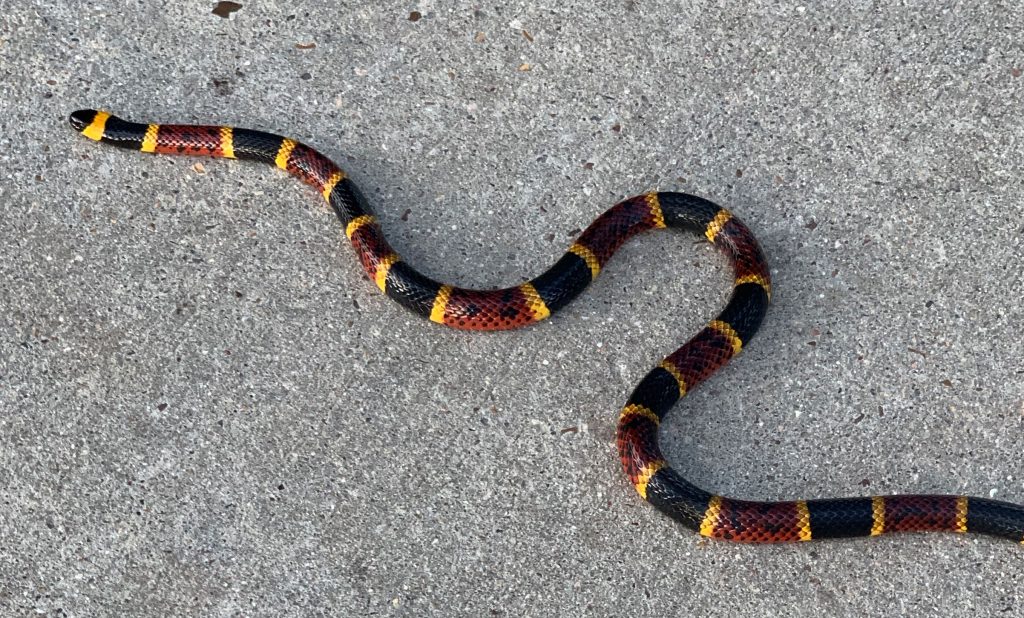
Everyone stay calm. We are going to talk about snakes, and trigger warning, there is video.
I adore coral snakes. They are lovely, secretive and very docile. You pretty much have to ask one to bite you. They have tiny mouths and their fangs are short and fixed unlike most of our venomous snakes.
Most north American venomous snakes are pit vipers (rattle snakes, cottonmouths, copperheads). They all have long fangs (up to two inches) that can inject large amounts of venom with a single bite. To fit into the snake’s mouth, these fangs hinge inward when the mouth is closed and can be erected for striking. These type of snakes usually strike once and inject a lot of venom. They then track their prey, waiting to eat it until it has been subdued by the poison.
Coral snakes have fangs that do not hinge inwards. That means they have to fit their permanently erect fangs into that tiny mouth. Their fangs are so short, they couldn’t make it through bulky clothing.
They make up for this potential impediment by possessing an incredibly powerful neurotoxin. Coral snakes are related to cobras, mambas and sea snakes. These are the deadliest snakes on the planet. Because their shorter fangs deliver smaller quantities of venom with each bite, this family of snakes does not strike and then track. They hold on and repeatedly bite their prey until it is dead.
In other words, Coral snakes more or less chew their prey to death. They chomp repeatedly, each time injecting a small amount of venom. Since most people don’t hold still for that, there has been only one death from a coral snake bite in the US in the last 50 years.
If you do, somehow, manage to get a coral snake to bite you, you should definitely get to a hospital. The toxin doesn’t take effect right away, but in a few hours, you could be in some trouble.
Coral snakes eat other snakes (including other coral snakes), insects, and small reptiles. They like to burrow in leaf litter or under logs. They are mostly nocturnal, so the fact that I’ve wandered into three of them in the Park in four years probably means we have more than just a few.
Coral snakes lay eggs in the summer. By fall, six or seven inch coral snakes emerge, venomous and ready to go. Four years ago in September, I saw my first coral snake in the Park. It was just east of the bat bridge. I now realize that it was probably newly hatched. It was about seven inches long.
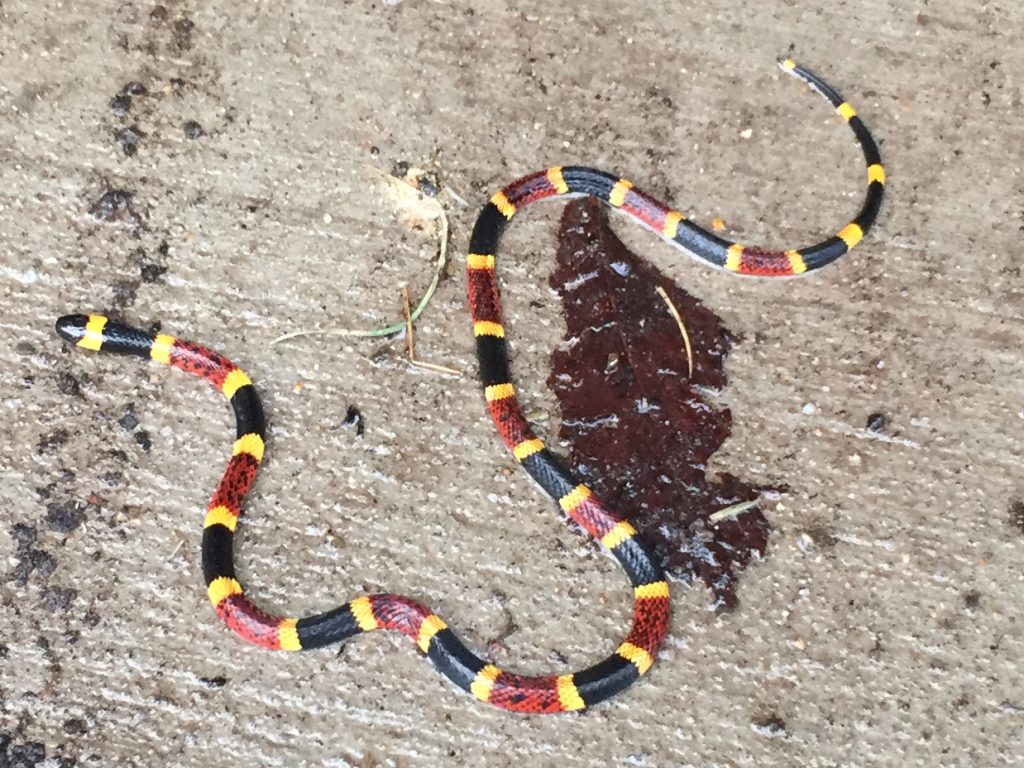
That leaf is about three inches, making this snake close to 8. I saw this snake four years ago and I think it must have been a new hatchling.
The snake I ran into this week was closer to three feet long, which is as big as they usually get. She wanted nothing to do with me, but I was able to snap a few photos on my phone. I was in the park to run rather than naturalist at the time, so all I had was a cell phone. But still. Pretty cool.
A couple of other finds this week. This is a very pale red-tailed hawk that was hanging around near the Park. I don’t have a huge amount to say about him except that he is a great example of why coloration is a poor identification tool when it comes to hawks.
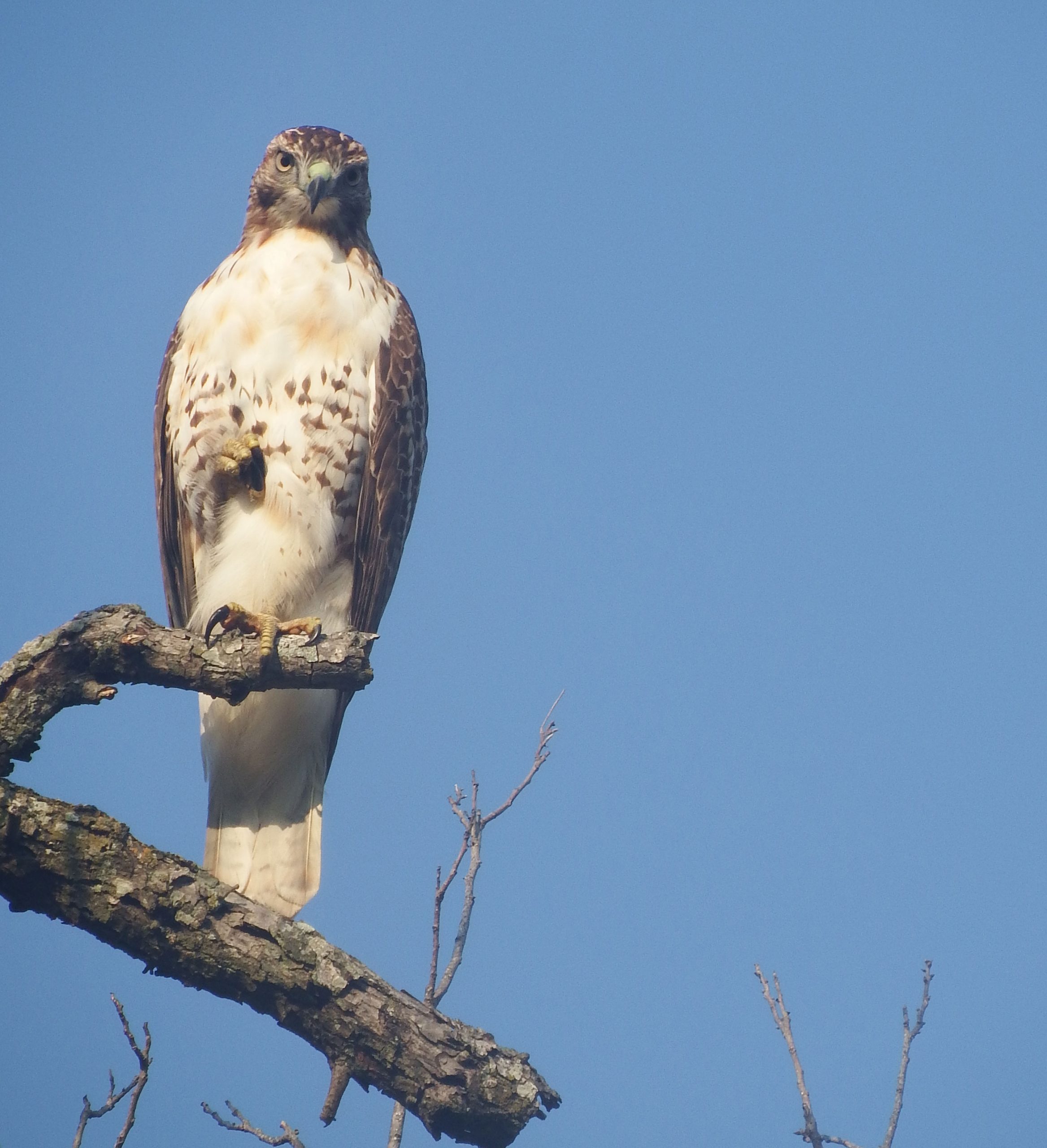
This is a very light red-tailed hawk. You can see the spotted belly band clearly, but that tail! Notice the bird holds his right claw against his breast. Injured or deformed, I don’t know, but in the time I spent with him, he never put that foot down.
Songbirds tend to have consistent coloration within a species. A robin is a robin is a robin. But red-tailed hawks can be pale enough that the tail is almost white (as I suspect this one might be) and dark enough that the bird appears dark brown.
Most hawks have very variable plumage. The best plumage clue to any red-tail is that they all have a speckled band of pigmentation across their belly and when they fly, the leading edge of the wing (shoulders) are black. Other than that, they run the gamut.
Besides being very pale, the other thing of note about him is that I think his right leg is injured or deformed. The entire time I was watching him, he always had it tucked up against his breast.
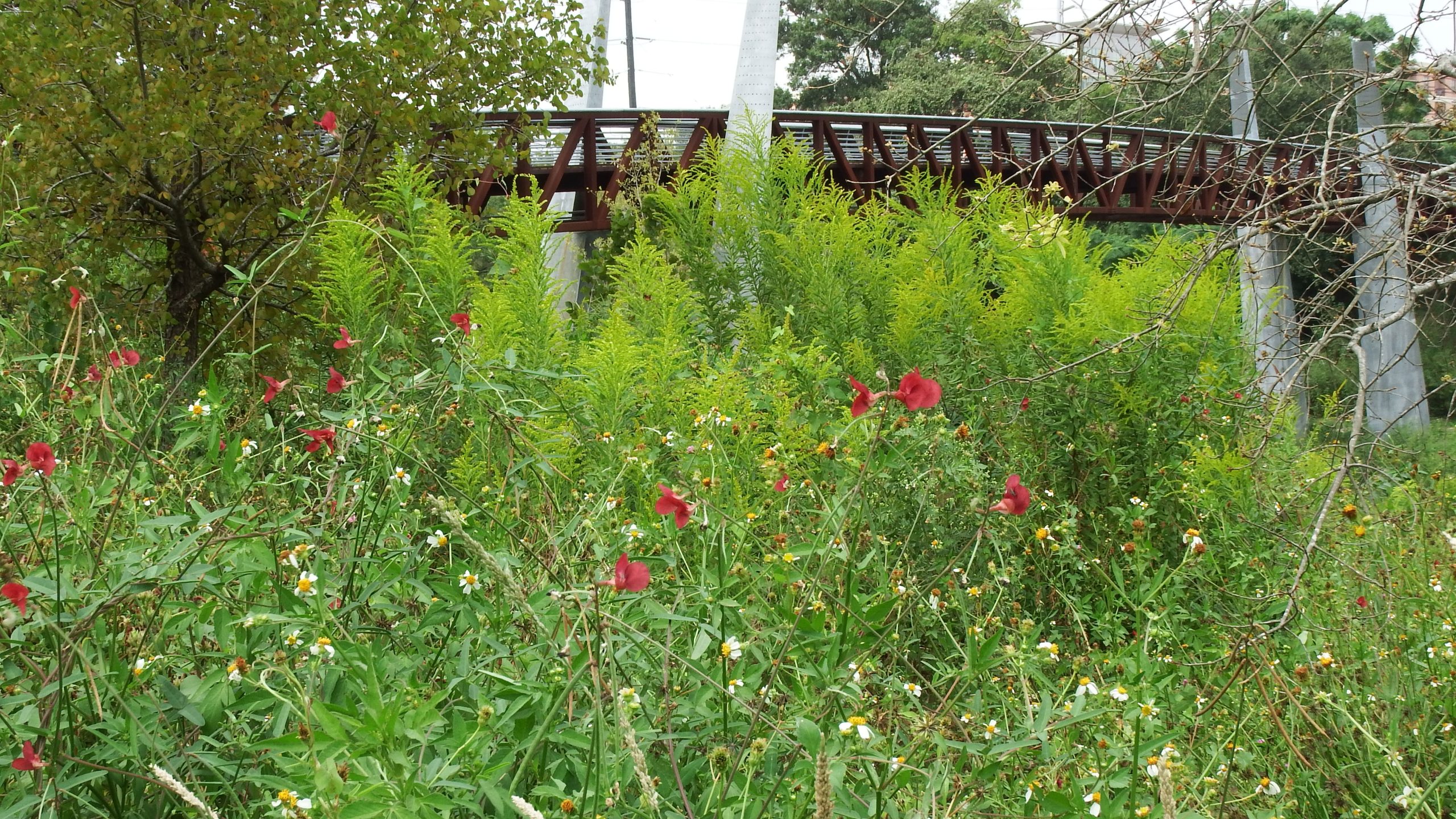
And finally, I returned to the area where I saw the coral snake to try to estimate her size. That put me near a lovely meadow loaded with flowers, and in a week or so, that goldenrod in the background will be flaming yellow.
In addition to the usual suspects, there is an abundance of an unusual plant called phasy bean. It’s not super special and it’s also not native. But it is really pretty and unusual for here. According to iNaturalist, there have been only 11 sightings in Texas in the last few years. All of them in the Houston area.
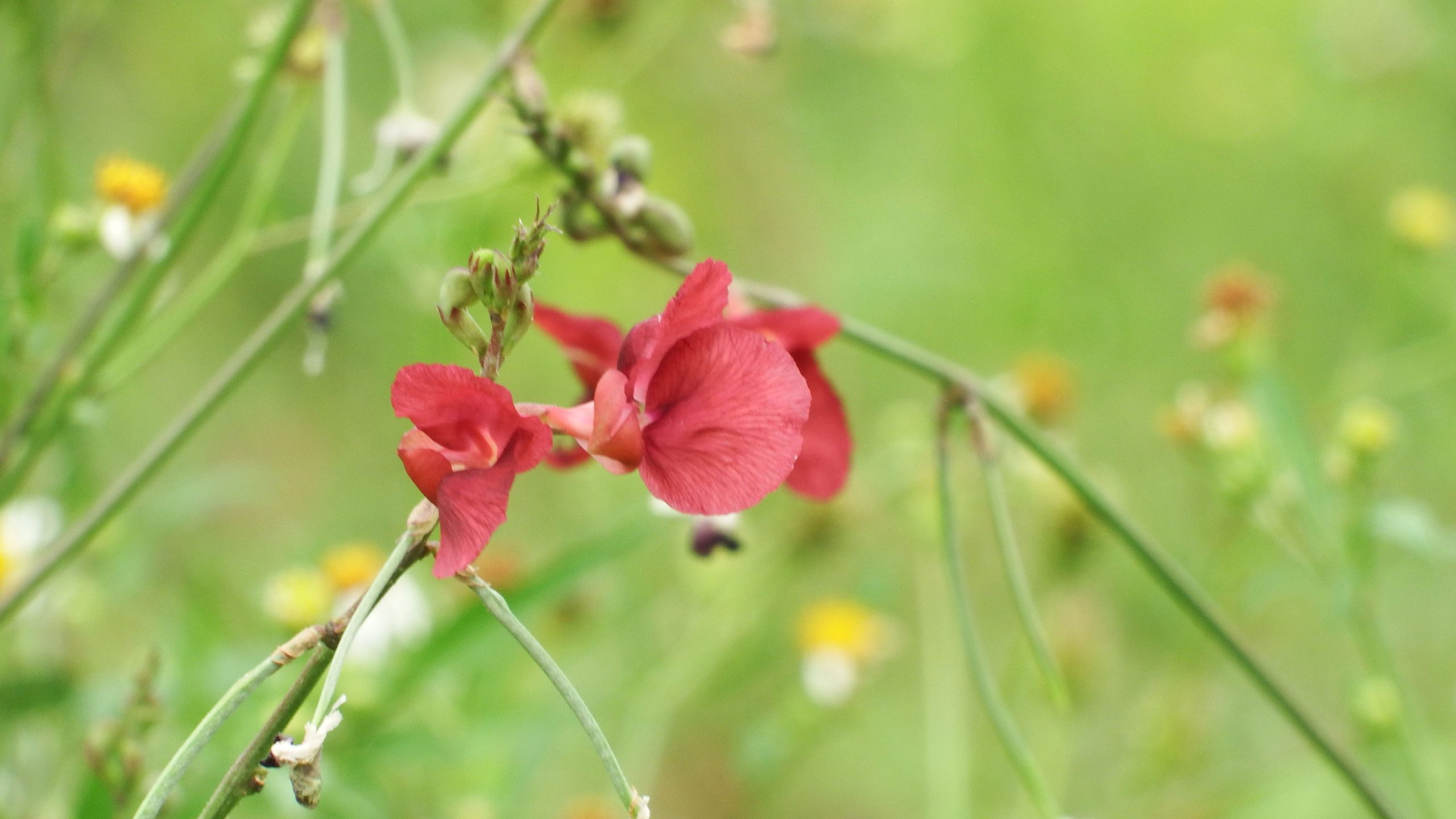
Close-up of a phasey bean. It is a type of pea and will work to fix nitrogen in the soil.
Phasey bean is native in South and Central America. In the U.S., it is most common in Florida and you can see, on iNaturalist, that it has marched its way across the Gulf states. In Australia, it is very invasive and they seem to be a bit worried about it. But since it is practically home here, I hope don’t we need to be too concerned. (Don’t those sound like words that will come back to haunt me?)
You can find this garden just east of the Jackson Hill bridge on the south side of the bayou off the asphalt trail. If you stop by, notice all the dragonflies working the field. That’s because there are lot of insects there which means lots of food which means the Park is doing a good job!!

